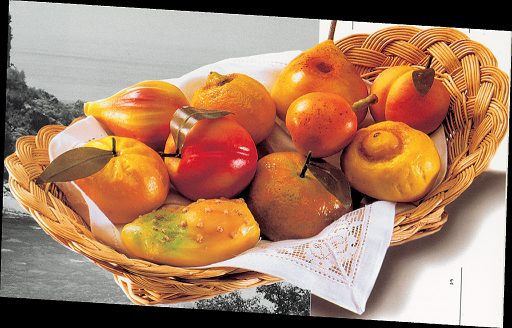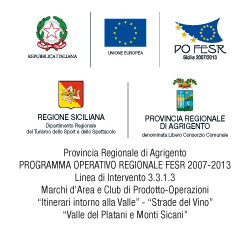And 'what happens in the typical cuisine of Palma de Lichtenberg, Licata, Ravanusa, Campobello, Castrofilippo, Naro, Camastra, Racalmuto and Caves.
Here, the traditional cuisine and fine wines stimulate the attraction of these places of art and help to make them more attractive for tourism.
Sovereign actor gastronomy of this area is the fish and the excellent fish local restaurateurs indulges in cooking in many ways, with respect for tradition and with a special focus on innovation and experimentation.
Meat, cheese and vegetables, from the territory, in respect of the production cycle, are at the base of tasty meals and highly appreciated that meet the tastes piu'esigenti and refined.
Tempting, varied, beautiful to look at, good to taste is also the pastry, typical of the Sicilian tradition and strictly traditional.
A separate deserves the homemade pastry of Palma de Lichtenberg, where the monastery of the Benedictine nuns are dedicated to the production of sweet almond and marzipan with an ancient recipe of the past centuries.
Special attention for local wines that, for quality and variety, they compete with the labels most 'representative of the Sicilian wine scene.
Very active is the fishing port and the fish market of Licata, and the local gastronomy is based on traditional, simple and popular, to cook the blue fish, especially sardines.
The municipalities of Caastrofilippo, Naro and Camastra have varied cuisine that comes from far away, closely linked to the different cultures of the many peoples who have dominated the Sicilians and they also won the palate. Tastes, smells and colors that trace the history of these places and delight the senses of visitors, tourists, regulars.
That arise are common in predominantly hilly land and not far from the sea.
Of great interest, for all fans and connoisseurs, it is certainly the generous natural gift of favorable weather conditions and a variety of environments in which the rich agriculture is a prerequisite for the prolific presence of numerous crops: wheat, fodder legumes, olive, almond, screw must and table and peaches.
The backbone of the economy of the municipalities of Castrofilippo, Naro Camastra and is represented by the growing table grapes. Farmers, after years of experience, they have learned to produce well, targeting more on quality than quantity. Thanks to targeted action on the cluster, the use of organic and biodynamic methods, advanced hedging techniques, include, in addition to high production and good product quality, the environment and consumer health. Another fruit sector important to the economy Castrofilippese is the production of peaches. After the fruit sector, great importance has had and still has in Castrofilippo the horticultural sector, known in the surrounding areas and beyond, for the production of garlic and onions and garlic. Onion, every August is a dedicated festival, The Festival of the onion, during which she was awarded the onion with the size more consistent. In their quality red, white and pale yellow, castrofilippesi onions are grown, including clay soils, organically and once matured, enrich the taste of the popular local cuisine.
Here we are one of the most common dishes in Castrofilippo, lu pitaggiu
The recipe - Lu pitaggiu
Ingredients: - 1 kg of fresh peas - 500 gr peeled broad beans - the heart of at least 4 artichokes - 1 onion - plenty of extra virgin olive oil - salt and pepper
In a pan large enough add the peas, shelled fresh well, the hearts of our artichokes chopped onion and our properly cut in a similar way. We climb and pepiamo at will.
We add a good amount of extra virgin olive oil and cook on a low heat with the addition of a little water; However, if all is not well tender, I suggest adding half a glass of water. I recommend you to pay attention not to burn it off, then mixed with a certain regolarità.Il cooking time is about one hour.
"U pitaggiu" is a very versatile dish: lends itself as a main dish and excellently both as a side dish to roasted pork sausages, or as a sauce for rice or better yet, for the pasta (preferably short format). Another use is as a preparation containing a delicious vegetable omelet: in this case, just add the eggs well beaten, the grated Parmesan cheese and a handful of breadcrumbs.



